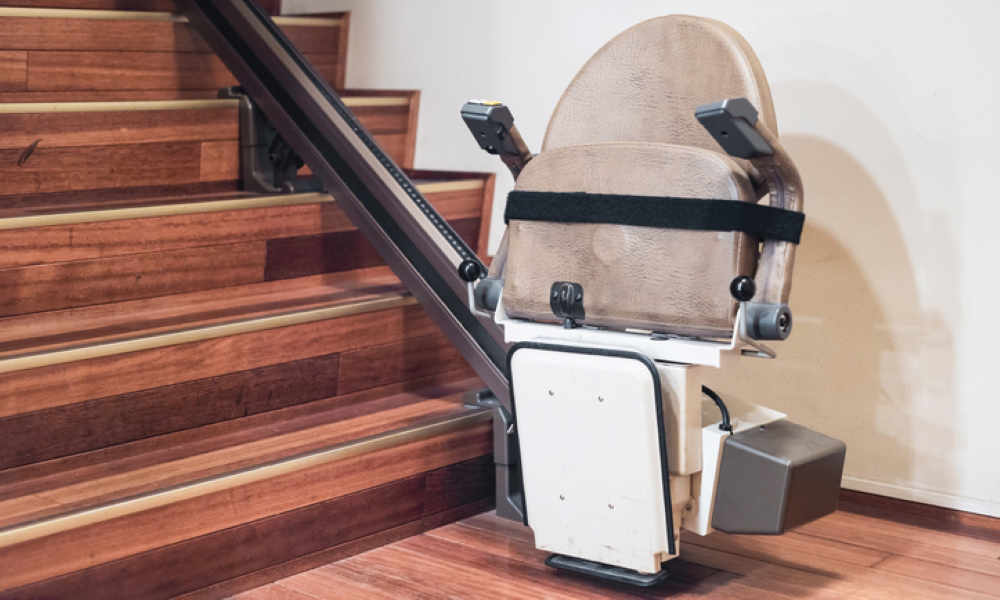Mobile Stair Lifts Without Installation: Safe, Simple, and Ready to Use
Mobile stair lifts offer an innovative solution for those who need assistance navigating stairs without permanent home modifications. Unlike traditional stairlifts that require professional installation and mounting to the wall, mobile stair lifts provide immediate accessibility with portable designs that can be used across multiple locations. These versatile mobility aids combine convenience with safety features to help users maintain independence.

Mobile stair lifts represent a significant advancement in accessibility technology, providing a non-permanent alternative to traditional fixed stairlifts. These portable devices help individuals with mobility challenges navigate stairs safely without requiring structural modifications to the home. For those who rent their homes, need temporary assistance, or want a solution that can move between locations, mobile stair lifts offer flexibility that conventional options cannot match. Their ready-to-use design means they can be deployed quickly when needed and stored away when not in use.
What Is a Mobile Stair Lift?
A mobile stair lift is a portable mobility device designed to transport individuals up and down stairs without requiring permanent installation. Unlike traditional stairlifts that attach to the wall or staircase, mobile versions operate independently using rechargeable battery systems. These units typically consist of a chair or platform mounted on a motorized base with specialized tracks or climbing mechanisms that navigate stairs. Most models can be folded or disassembled for transport, making them ideal for users who need assistance in multiple locations or who cannot install permanent modifications to their living spaces.
Mobile stair lifts come in various designs, including attendant-operated models that require a caregiver to assist with operation, and self-propelled versions that users can control independently. Some advanced models feature innovative climbing technologies that can handle different stair configurations, including curved staircases and outdoor steps.
How Does a Mobile Stair Lift Work?
Most mobile stair lifts operate using a combination of powerful motors, specialized treads or wheels, and advanced balance systems. The operational principle varies by design, but generally falls into two categories: tracked systems and climbing systems.
Tracked mobile stair lifts use temporary tracks that can be quickly placed on the stairs. The user sits in the chair attached to the track system, and the motorized unit moves smoothly along the track. These systems are relatively simple to set up and provide a stable ride but may require some assembly before each use.
Climbing mobile stair lifts, on the other hand, use specialized wheels or treads that physically climb each step. These models often employ innovative balance technology to maintain a level seating position as the device ascends or descends the stairs. Many climbing models feature safety sensors that detect obstacles and prevent accidents. Power typically comes from rechargeable batteries that can handle multiple trips before requiring recharging, ensuring reliability even during power outages.
What Are the Key Benefits of Mobile Stair Lifts?
The flexibility of mobile stair lifts provides numerous advantages over traditional fixed installations. First and foremost is their portability—users can transport these devices between different locations, making them ideal for individuals who frequently visit family members or travel between homes. This portability also means no permanent modifications to the property, which is particularly valuable for renters or those planning to sell their homes in the future.
Another significant benefit is the immediate availability. While permanent stairlifts often require weeks for assessment, ordering, and installation, mobile options can be purchased and used immediately. This makes them excellent solutions for temporary needs, such as during recovery from surgery or injury.
Mobile stair lifts also offer economic advantages. Without installation costs, they typically represent a lower initial investment than permanent models. Additionally, they retain resale value when no longer needed, unlike fixed installations that become part of the property. For facilities like care homes or hospitals, a single mobile unit can serve multiple areas rather than requiring installation on every staircase.
Who Should Consider Using a Mobile Stair Lift?
Mobile stair lifts serve a diverse range of individuals facing various mobility challenges. Elderly persons who struggle with stairs but don’t require assistance all the time find these devices particularly helpful for maintaining independence while having support available when needed. Similarly, individuals recovering from surgery, injury, or illness often benefit from temporary mobility assistance that doesn’t require permanent home modifications.
People with progressive conditions may initially choose a mobile stair lift as a less committal option before potentially transitioning to a permanent solution as their needs evolve. Caregivers also appreciate these devices for reducing the physical strain of helping loved ones navigate stairs, decreasing injury risk for both parties.
Renters face unique challenges when needing accessibility modifications, as landlords may not permit permanent alterations to the property. Mobile stair lifts provide an excellent solution in these situations, offering the necessary support without structural changes. Additionally, individuals who split time between multiple residences find great value in portable options that can travel with them.
Cost Considerations and Popular Mobile Stair Lift Options
Mobile stair lift prices vary considerably based on design complexity, weight capacity, and additional features. Basic attendant-operated models typically range from £1,500 to £3,000, while more advanced self-propelled units with greater weight capacities and specialized features can cost between £3,000 and £8,000. These prices generally compare favorably to traditional stairlifts when considering the elimination of installation costs, which can add £500-£1,000 to permanent solutions.
| Model | Type | Key Features | Price Range |
|---|---|---|---|
| Scalamobil S35 | Attendant-operated climbing | Fits most wheelchair types, handles up to 140kg | £3,800-£4,500 |
| Liftkar PT-S | Attendant-operated climbing | Integrated seat, 130kg capacity, folds for transport | £3,200-£3,800 |
| Liftkar PT-Universal | Attendant-operated for wheelchair | Attaches to most wheelchairs, 130kg capacity | £3,500-£4,200 |
| Garaventa Stair-Trac | Track-based for wheelchair | Portable track system, 130kg capacity | £2,800-£3,500 |
| Mobility Conquest | Self-propelled climber | User-operated, joystick control, 120kg capacity | £6,500-£7,500 |
Prices, rates, or cost estimates mentioned in this article are based on the latest available information but may change over time. Independent research is advised before making financial decisions.
Additional costs to consider include maintenance, which typically involves battery replacement every 2-3 years (£100-£300) and occasional servicing. Many manufacturers offer warranty packages, with standard coverage ranging from 1-3 years and extended options available at additional cost. Some suppliers also offer rental options, which may prove more economical for temporary needs, with monthly rates typically between £100-£300 depending on the model.
When selecting a mobile stair lift, consider not only the purchase price but also the total cost of ownership, including maintenance, battery life, and potential resale value. Many suppliers offer demonstrations and short-term trials, allowing users to assess suitability before committing to purchase.
Mobile stair lifts provide a valuable accessibility solution that balances safety, convenience, and flexibility. Their portable nature makes them suitable for various situations where permanent installations aren’t practical or desirable. While they require some physical effort from caregivers for attendant-operated models, their ability to be used immediately without structural modifications offers significant advantages. As mobility technology continues to advance, these versatile devices remain an important option for maintaining independence and quality of life for individuals with mobility challenges.




